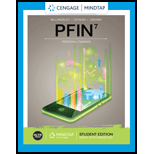
To describe: The basic features and operating characteristics of exchange traded funds and mutual funds.
Explanation of Solution
Followings are the basic features and operating characters of mutual funds:
Pooled Investment: Mutual funds are pooled investments where various investors invest their money, which is further invested in different securities.
Diversification: The main feature of the mutual funds is that it provides diverse portfolio od securities to its investors.
No guaranteed returns: Since the market conditions are dynamic and prices of the securities fluctuate, the guarantee of fixed returns is not possible.
Convenience: Mutual funds make it convenient for investors to invest in securities. It only requires some paperwork, account opening, and other procedures.
Professional Management: Mutual funds provide professional services to the investors for which they are paid. The fund managers look for investments with better returns and less risk.
Followings are the basic features and operating characteristics of Exchange-Traded Funds (ETFs):
- Pooled Investment: ETFs are the pooled investment fund that is traded on the stock exchange and holds stocks, bonds and commodities to its NAV (Net Asset Value) throughout the trading day.
- Annual fee: ETFs usually have less annual fee than the mutual funds.
- Tax benefits: ETFs provide tax benefits as to the investors.
- Liquidity: The liquidity of the ETF is directly related to the liquidity of the underlying asset.
Want to see more full solutions like this?
Chapter 13 Solutions
PFIN 7:STUDENT EDITION-MINDTAP (1 TERM)
- critically discuss the hockey stick model of a start-up financing. In your response, explain the model and discibe its three main stages, highlighting the key characteristics of each stage in terms of growth, risk, and funding expectations.arrow_forwardSolve this problem please .arrow_forwardSolve this finance question.arrow_forward
- solve this question.Pat and Chris have identical interest-bearing bank accounts that pay them $15 interest per year. Pat leaves the $15 in the account each year, while Chris takes the $15 home to a jar and never spends any of it. After five years, who has more money?arrow_forwardWhat is corporate finance? explain all thingsarrow_forwardSolve this finance problem.arrow_forward
 Pfin (with Mindtap, 1 Term Printed Access Card) (...FinanceISBN:9780357033609Author:Randall Billingsley, Lawrence J. Gitman, Michael D. JoehnkPublisher:Cengage Learning
Pfin (with Mindtap, 1 Term Printed Access Card) (...FinanceISBN:9780357033609Author:Randall Billingsley, Lawrence J. Gitman, Michael D. JoehnkPublisher:Cengage Learning

